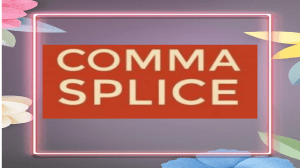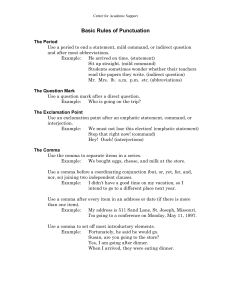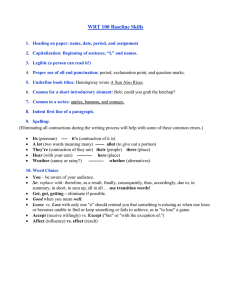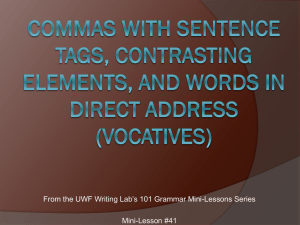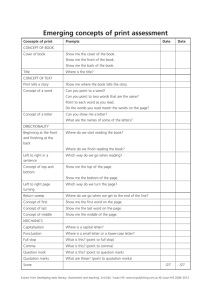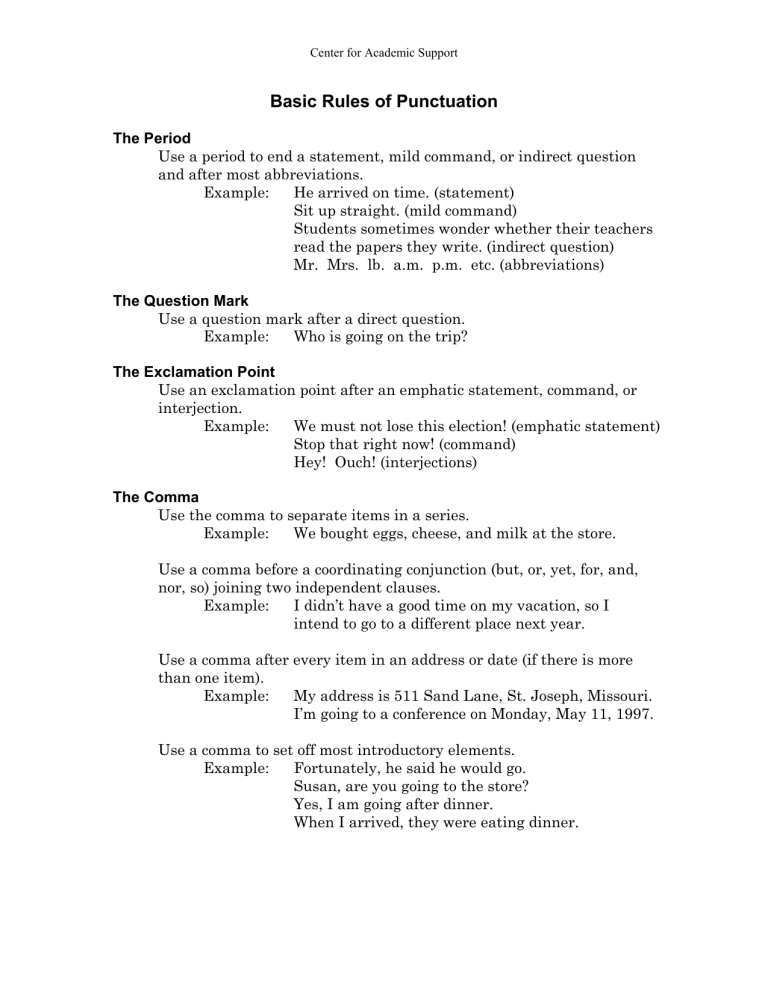
Center for Academic Support Basic Rules of Punctuation The Period Use a period to end a statement, mild command, or indirect question and after most abbreviations. Example: He arrived on time. (statement) Sit up straight. (mild command) Students sometimes wonder whether their teachers read the papers they write. (indirect question) Mr. Mrs. lb. a.m. p.m. etc. (abbreviations) The Question Mark Use a question mark after a direct question. Example: Who is going on the trip? The Exclamation Point Use an exclamation point after an emphatic statement, command, or interjection. Example: We must not lose this election! (emphatic statement) Stop that right now! (command) Hey! Ouch! (interjections) The Comma Use the comma to separate items in a series. Example: We bought eggs, cheese, and milk at the store. Use a comma before a coordinating conjunction (but, or, yet, for, and, nor, so) joining two independent clauses. Example: I didn’t have a good time on my vacation, so I intend to go to a different place next year. Use a comma after every item in an address or date (if there is more than one item). Example: My address is 511 Sand Lane, St. Joseph, Missouri. I’m going to a conference on Monday, May 11, 1997. Use a comma to set off most introductory elements. Example: Fortunately, he said he would go. Susan, are you going to the store? Yes, I am going after dinner. When I arrived, they were eating dinner. Center for Academic Support Use a comma to set off nonrestrictive elements. Example: For camp the children needed clothes that were washable. (restrictive) For camp the children needed sturdy shoes, which were expensive. (nonrestrictive) Use a comma to separate coordinate adjectives (if they can be connected with "and"). Example: Robert is a warm, gentle, affectionate father. Use a comma to set off transitional and parenthetical expressions, absolute phrases, and contrasted elements. Example: Mike did not understand the assignment; therefore, he didn’t complete it. (transitional) Evolution, as far as we know, does not work this way. (parenthetical) His tennis game at last perfected, Chris won the cup. (absolute) Celia, unlike Robert, had no loathing for dance contests. (contrasted) Use a comma before the text of a quotation. Example: The teacher said, “Return to your seats.” Use a comma after the salutation of a friendly letter. Example: Dear Mom, The Semicolon Use a semicolon to separate independent clauses in a sentence and to separate items in a series when commas are used as well. Example: Injustice is relatively easy to bear; what stings is justice (Mencken). The only sensible ends of literature are first, the pleasurable toil of writing; second, the gratification of one’s family and friends; and lastly, the solid cash (Hawthorne). The Colon Use a colon to call attention to the words that follow it. Example: The routine includes the following: twenty knee bends, fifty leg lifts, and five minutes of running in place. (list) My roommate is guilty of two of the seven deadly sins: gluttony and sloth. (appositive) Center for Academic Support Consider the words of John F. Kennedy: “Ask not what your country can do for you; ask what you can do for your country.” (quotation) The Apostrophe Use the apostrophe to indicate possession, to mark contractions, and to pluralize letters or numbers. Example: boy’s hat; ladies’ hats; men’s coats (possession) aren’t, won’t, can’t, didn’t (contractions) There are four s’s in Mississippi. (plural letters) The Quotation Mark Use quotation marks to enclose direct quotes and around titles of short works. Example: The poem “Mother to Son” is by Langston Hughes. “A foolish consistency is the hobgoblin of little minds,” wrote Ralph Waldo Emerson.
